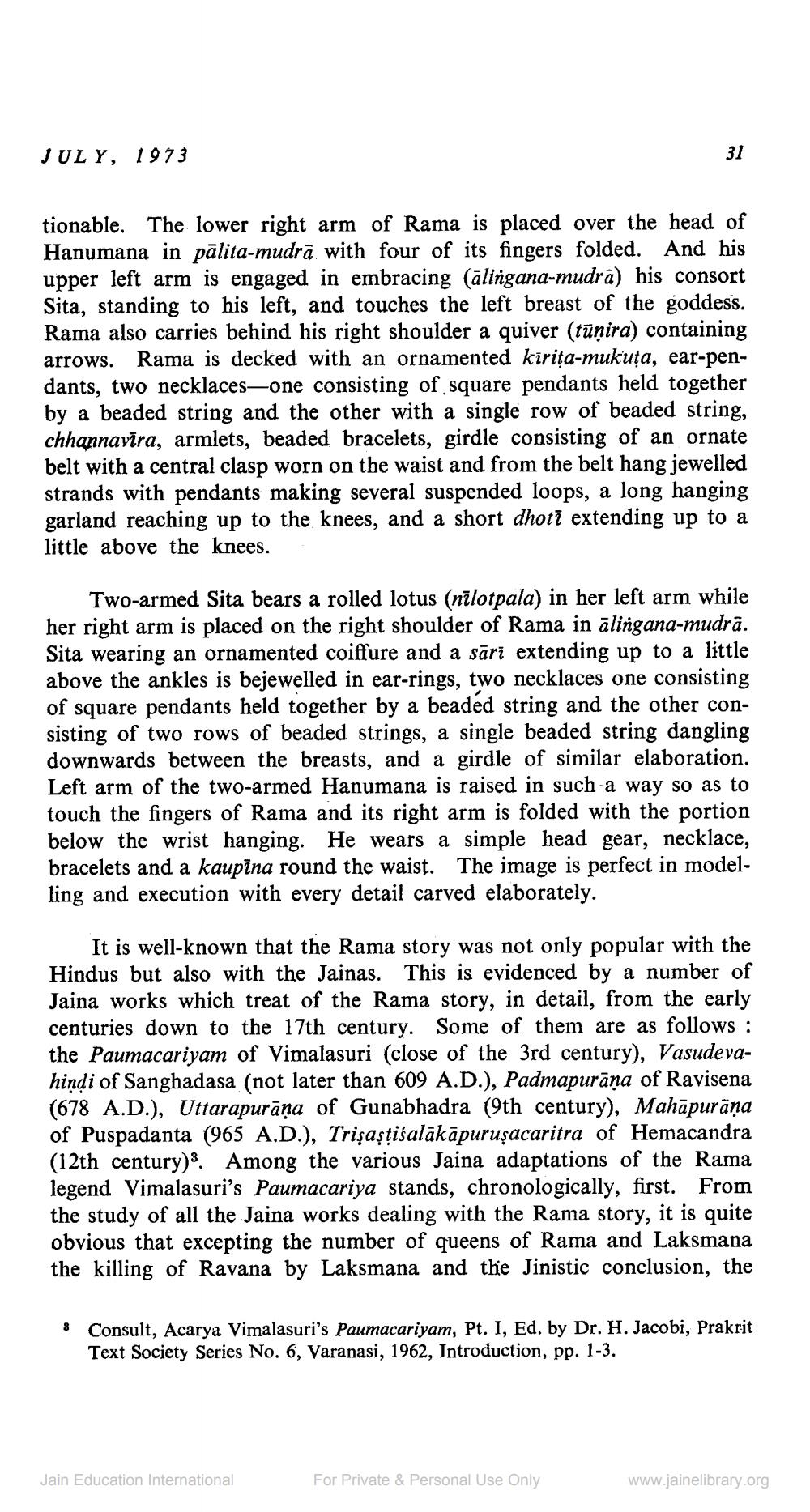________________
JULY, 1973
tionable. The lower right arm of Rama is placed over the head of Hanumana in pālita-mudrā with four of its fingers folded. And his upper left arm is engaged in embracing (ālingana-mudra) his consort Sita, standing to his left, and touches the left breast of the goddess. Rama also carries behind his right shoulder a quiver (tūņira) containing arrows. Rama is decked with an ornamented kirita-mukuța, ear-pendants, two necklaces—one consisting of square pendants held together by a beaded string and the other with a single row of beaded string, chhannavīra, armlets, beaded bracelets, girdle consisting of an ornate belt with a central clasp worn on the waist and from the belt hang jewelled strands with pendants making several suspended loops, a long hanging garland reaching up to the knees, and a short dhoti extending up to a little above the knees.
Two-armed Sita bears a rolled lotus (nīlotpala) in her left arm while her right arm is placed on the right shoulder of Rama in ālingana-mudrā. Sita wearing an ornamented coiffure and a sārī extending up to a little above the ankles is bejewelled in ear-rings, two necklaces one consisting of square pendants held together by a beaded string and the other consisting of two rows of beaded strings, a single beaded string dangling downwards between the breasts, and a girdle of similar elaboration. Left arm of the two-armed Hanumana is raised in such a way so as to touch the fingers of Rama and its right arm is folded with the portion below the wrist hanging. He wears a simple head gear, necklace, bracelets and a kaupīna round the waist. The image is perfect in modelling and execution with every detail carved elaborately.
It is well-known that the Rama story was not only popular with the Hindus but also with the Jainas. This is evidenced by a number of Jaina works which treat of the Rama story, in detail, from the early centuries down to the 17th century. Some of them are as follows: the Paumacariyam of Vimalasuri (close of the 3rd century), Vasudevahindi of Sanghadasa (not later than 609 A.D.), Padmapurāņa of Ravisena (678 A.D.), Uttarapurāņa of Gunabhadra (9th century), Mahāpurāņa of Puspadanta (965 A.D.), Trişaștiśalākāpuruşacaritra of Hemacandra (12th century). Among the various Jaina adaptations of the Rama legend Vimalasuri's Paumacariya stands, chronologically, first. From the study of all the Jaina works dealing with the Rama story, it is quite obvious that excepting the number of queens of Rama and Laksmana the killing of Ravana by Laksmana and the Jinistic conclusion, the
3 Consult, Acarya Vimalasuri's Paumacariyam, Pt. I, Ed. by Dr. H. Jacobi, Prakrit
Text Society Series No. 6, Varanasi, 1962, Introduction, pp. 1-3.
Jain Education International
For Private & Personal Use Only
www.jainelibrary.org




